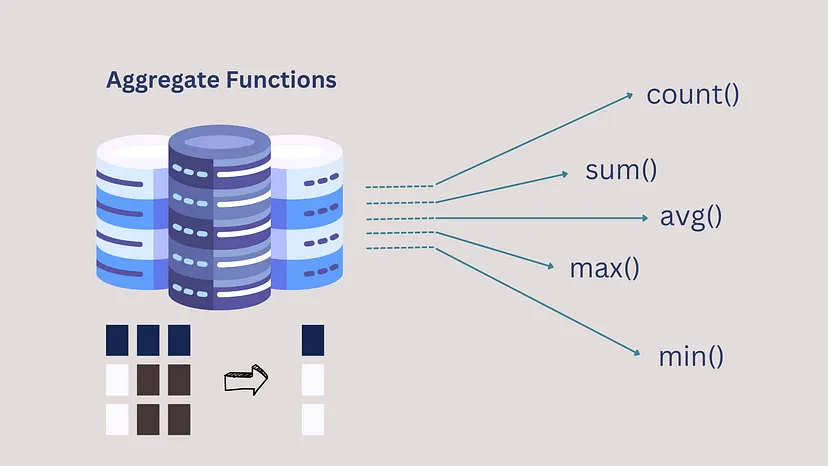Aggregate functions in SQL are crucial for data analysis and reporting, enabling you to perform calculations on multiple rows of data and return a single result. Here’s a breakdown of the main aggregate functions and how to use them effectively:
Key SQL Aggregate Functions
- SUM(): Calculates the total of a numeric column.
SELECT department_id, SUM(salary) AS total_salary FROM employees GROUP BY department_id; - AVG(): Computes the average value of a numeric column.
SELECT department_name, AVG(salary) AS avg_salary FROM employees GROUP BY department_name; - COUNT(): Returns the number of rows that match a specified criterion.
SELECT COUNT(*) AS total_employees FROM employees WHERE department_id = 1; - MIN(): Finds the minimum value in a column.
SELECT MIN(salary) AS min_salary FROM employees; - MAX(): Determines the maximum value in a column.
SELECT MAX(salary) AS max_salary FROM employees;

Using GROUP BY Clause
To use aggregate functions effectively, you often pair them with the GROUP BY clause to group data by one or more columns:
SELECT department_name, COUNT(*) AS num_employees
FROM employees
GROUP BY department_name;
Tips for Beginners
- Combine with Other Clauses: Use aggregate functions with
WHERE,HAVING, andORDER BYto filter and sort your results.SELECT department_name, AVG(salary) AS avg_salary FROM employees GROUP BY department_name HAVING AVG(salary) > 50000 ORDER BY avg_salary DESC; - Aliasing: Use aliases to make your results more readable.
SELECT department_name, SUM(salary) AS total_salary FROM employees GROUP BY department_name; - Handling NULL Values: Aggregate functions generally ignore
NULLvalues, exceptCOUNT(*).
Practical Applications
- Reporting: Generate summary reports, such as total sales by region or average customer spend.
- Data Analysis: Identify trends and patterns by aggregating data points.
- Optimization: Optimize queries by understanding how aggregate functions and
GROUP BYwork together.
By mastering these aggregate functions, you can unlock powerful data manipulation capabilities in SQL, enabling you to extract meaningful insights from your data.
Learn more on sql data manulation and sql DDL in our articles.
For more detailed explanations and examples, you can visit SQL Tutorial and DataCamp.


